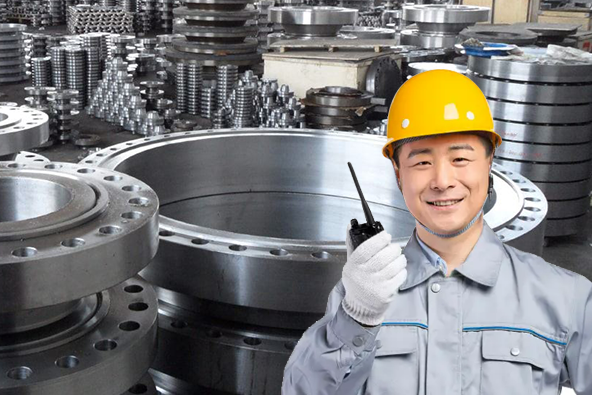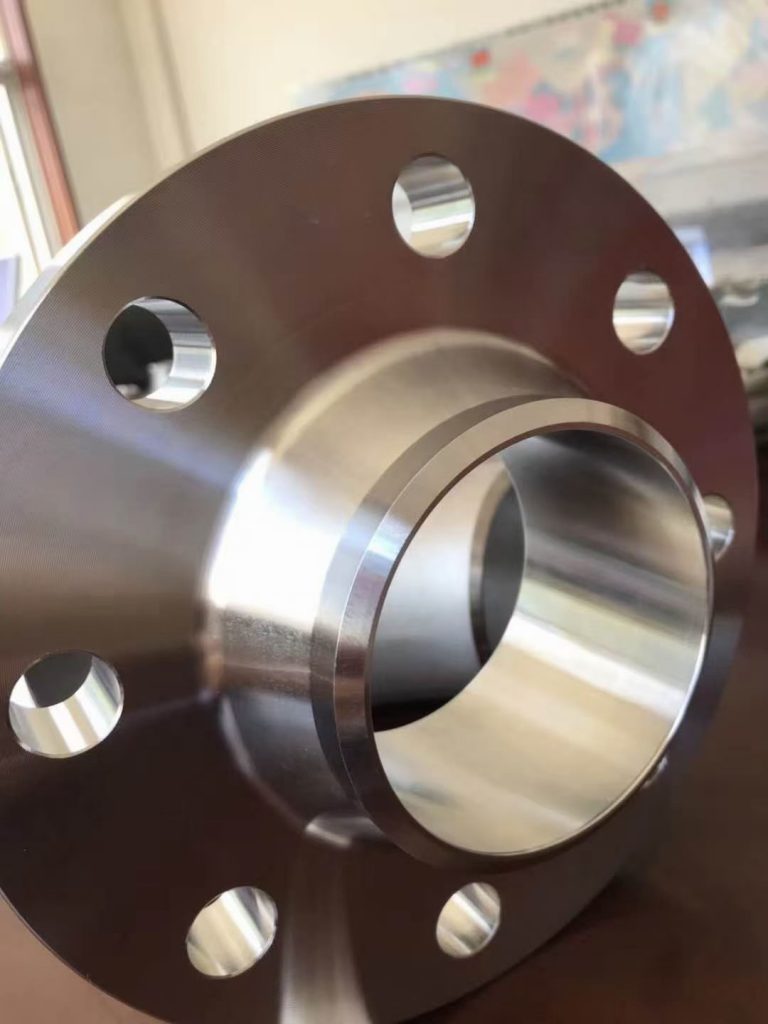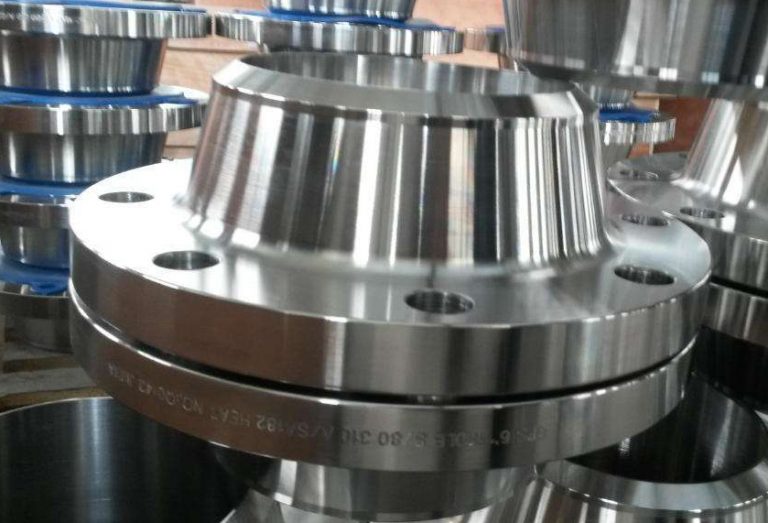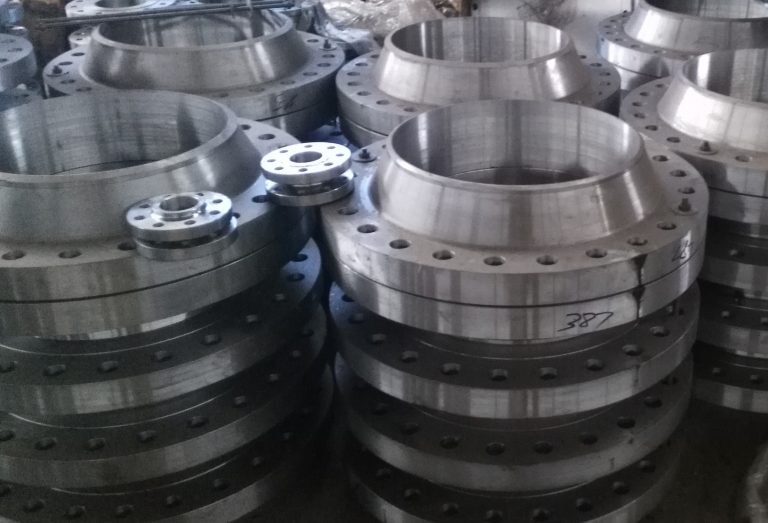Introduction
In the realm of modern industry, flanges play a pivotal role in pipeline connections. However, the issues of flange corrosion and leakage pose a significant threat to the stability and reliability of industrial systems. To gain a better understanding and address this challenge effectively, we delve into the various factors causing flange corrosion and leakage, along with proactive measures to ensure the secure operation of systems. This blog will comprehensively explore the types of corrosion, common causes, and the expertise of YANHAO in providing innovative solutions in this field.
Through an in-depth exploration of this topic, our aim is to provide industrial professionals with rich and insightful information, showcasing the professionalism, authority, and trustworthiness of YANHAO in the industrial solutions domain. Join us in this exploration to understand how to collectively tackle the challenges of flange corrosion and leakage, ensuring the sustainability and safety of industrial systems.
II. Understanding Flange Corrosion
A. Types of Corrosion Affecting Flanges
Flanges, vital components in industrial piping systems, are susceptible to various types of corrosion. Understanding these corrosion types is essential for implementing effective preventive measures. Here are the primary forms of corrosion that can affect flanges:
Atmospheric Corrosion:
- Description: Atmospheric corrosion occurs due to exposure to environmental elements such as moisture, oxygen, and pollutants.
- Effects on Flanges: Flanges exposed to marine environments or industrial atmospheres are particularly vulnerable.
- Preventive Measures: Protective coatings, corrosion-resistant materials, and environmental controls help mitigate atmospheric corrosion.
Chemical Corrosion:
- Common Corrosive Agents: Corrosive substances present in industrial settings, including acids, alkalis, and other chemicals.
- Material Compatibility: The choice of materials is critical to resist chemical corrosion. Mismatched material selection can accelerate corrosion.
- Impact on Flanges: Chemical corrosion can lead to material degradation and compromise the structural integrity of flanges.
- Preventive Strategies: Selecting corrosion-resistant materials, monitoring chemical exposure, and implementing proper coatings are essential preventive measures.
Electrochemical Corrosion:
- Galvanic Corrosion: This occurs when dissimilar metals come into contact, creating a galvanic cell that accelerates corrosion.
- Environments Prone to Electrochemical Corrosion: Saltwater, industrial process fluids, and situations where different metals are in close proximity.
- Effects on Flanges: Electrochemical corrosion can lead to localized pitting, accelerated metal loss, and compromise the structural integrity of flanges.
- Preventive Measures: Insulating materials, proper material selection, and protective coatings help mitigate the risk of galvanic corrosion.
Understanding these types of corrosion is crucial for developing comprehensive strategies to safeguard flanges in diverse industrial environments. It enables the selection of appropriate materials, coatings, and maintenance practices to ensure the longevity and reliability of flange components within complex piping systems.
B. Impact of Corrosion on Flange Integrity
Corrosion significantly jeopardizes the structural integrity of flanges within industrial piping systems. The consequences of corrosion can manifest in various ways, affecting both the short-term and long-term performance of flanges. Here’s a detailed exploration of the impact of corrosion on flange integrity:
Structural Deterioration:
- Corrosion Patterns: Corrosion leads to visible structural changes, including pitting, cracking, and rust formation on the surface of flanges.
- Weakening of Materials: The continuous corrosion process weakens the material composition of flanges, compromising their ability to withstand mechanical stress.
- Risk of Leaks: Structural deterioration increases the likelihood of developing leaks, as the corroded areas may no longer provide an effective barrier against fluid or gas flow.
Reduced Load-Bearing Capacity:
- Mechanisms of Load Reduction: Corrosion weakens the load-bearing capacity of flanges, primarily through stress concentration and the formation of corrosion-induced defects.
- Increased Vulnerability to Pressure: Flanges may experience a reduction in their ability to withstand internal pressure, leading to the risk of rupture or failure under operational loads.
- Safety Implications: Reduced load-bearing capacity poses a serious safety concern, as it can result in sudden and catastrophic failures within the piping system.
Effect on Sealing Surfaces:
- Deterioration of Sealing Materials: Corrosion can compromise the sealing surfaces of flanges, affecting the effectiveness of gaskets and seals.
- Increased Potential for Leaks: As corrosion progresses, the sealing surfaces may develop irregularities, making it challenging to maintain a tight and secure seal, ultimately contributing to leakage issues.
Operational Disruptions:
- Downtime and Maintenance Costs: The need for frequent repairs and maintenance due to corrosion-related issues can lead to unplanned downtime and increased operational costs.
- Impact on System Performance: Corrosion-induced failures in flanges can disrupt overall system performance, affecting the efficiency and reliability of industrial processes.
Environmental Consequences:
- Fluid or Gas Escapes: Corrosion-related leaks may result in the release of potentially hazardous substances, posing environmental risks.
- Regulatory Compliance: Environmental consequences may lead to regulatory scrutiny, impacting compliance and potentially resulting in fines or sanctions.
Understanding the multifaceted impact of corrosion on flange integrity underscores the importance of proactive measures. Regular inspections, the use of corrosion-resistant materials, and implementing effective maintenance practices are essential to mitigate the structural risks posed by corrosion and ensure the reliable operation of industrial piping systems.
C. Examples and Case Studies
- Industrial Incidents: a. Oil and Gas Pipeline Failure:
- Overview: In a high-profile incident, a section of an oil and gas pipeline experienced flange failure due to severe corrosion.
- Consequences: The failure led to a significant oil spill, environmental damage, and extensive downtime for cleanup and repairs.
- Lessons Learned: The incident underscored the need for regular inspections, corrosion-resistant materials, and proactive maintenance.
- Overview: A chemical processing plant experienced a leak in a critical flanged connection, impacting the safety of the facility.
- Impact: The leak resulted in the release of hazardous chemicals, triggering an emergency response and regulatory investigation.
- Preventive Measures: Subsequent improvements included upgraded materials, corrosion-resistant coatings, and more rigorous inspection protocols.
- Success Stories in Corrosion Prevention: a. Marine Industry Retrofit:
- Scenario: A maritime company faced recurring issues with flange corrosion in its vessels’ piping systems.
- Solution: Implementation of advanced corrosion-resistant materials, regular anti-corrosion coatings, and a comprehensive maintenance schedule.
- Outcome: A significant reduction in corrosion-related failures, leading to enhanced operational reliability and extended equipment lifespan.
- Challenge: A petrochemical plant experienced frequent downtime due to flange corrosion, impacting overall production efficiency.
- Strategic Changes: Introduction of corrosion-resistant alloys, adoption of proactive monitoring systems, and a shift towards predictive maintenance.
- Results: Substantial reduction in downtime, increased plant efficiency, and substantial cost savings over the long term.
- Regulatory Responses: a. Industry Standards Enhancement:
- Background: A series of flange-related incidents prompted regulatory bodies to reassess industry standards.
- Response: Introduction of more stringent guidelines for material selection, corrosion monitoring, and inspection frequency.
- Industry Impact: Companies now adhere to elevated standards, ensuring a higher level of integrity in their flange systems.
III. Identifying Common Causes of Flange Corrosion
Understanding the root causes of flange corrosion is crucial for developing effective prevention strategies. Here, we delve into the common factors that contribute to flange corrosion, shedding light on the issues that industries often encounter:
Harsh Environmental Conditions:
- Exposure to Moisture and Oxygen: Flanges exposed to high humidity or corrosive atmospheres, especially in marine or industrial settings, are susceptible to atmospheric corrosion.
- Temperature Extremes: Drastic temperature fluctuations can accelerate corrosion processes, impacting the protective layers on flange surfaces.
Inadequate Material Selection:
- Mismatched Material Compatibility: Choosing materials that are not resistant to the specific corrosive elements present in the operating environment can expedite corrosion.
- Failure to Consider Fluid Properties: Flanges in contact with corrosive fluids must be constructed from materials that can withstand chemical reactions.
Poor Installation Practices:
- Improper Tightening of Bolts: Incorrect torque during flange assembly can lead to uneven pressure distribution, creating vulnerabilities for corrosion.
- Insufficient Gasket Sealing: Inadequate sealing can permit the ingress of corrosive agents, initiating corrosion at the flange interface.
Lack of Regular Maintenance:
- Neglected Inspection Schedules: Infrequent inspections may result in undetected corrosion, allowing it to progress to advanced stages before corrective action is taken.
- Deferred Repairs: Postponing necessary repairs identified during inspections can exacerbate corrosion-related issues over time.
Operational Factors Contributing to Corrosion:
- High Operational Stress: Flanges in systems experiencing high pressure, flow rates, or frequent cycling may be more prone to corrosion due to increased stress.
- Fluid Impurities: Presence of contaminants or impurities in the fluid being transported can accelerate corrosion processes, especially in chemical processing industries.
Insufficient Corrosion Protection Measures:
- Lack of Protective Coatings: Failure to apply or maintain protective coatings leaves flanges vulnerable to direct exposure to corrosive elements.
- Inadequate Cathodic Protection: For buried or submerged flanges, insufficient cathodic protection can result in accelerated corrosion.
Understanding these common causes of flange corrosion provides the foundation for implementing preventive measures. Industries can address these issues by adopting corrosion-resistant materials, adhering to proper installation and maintenance practices, and leveraging advanced protective coatings. Regular inspections and a proactive approach to addressing potential causes contribute significantly to the longevity and reliability of flange systems within industrial operations.
IV. Preventive Measures for Flange Corrosion
To ensure the longevity and reliability of flanges in industrial applications, implementing robust preventive measures is imperative. The following strategies outline effective approaches to mitigate the risk of flange corrosion:
Proper Material Selection:
- Corrosion-Resistant Alloys: Choose materials specifically designed to resist corrosion in the given operating environment.
- Consideration of Fluid Properties: Select materials compatible with the chemical composition of the fluids the flanges will come into contact with.
Effective Coating and Corrosion Inhibitors:
- High-Quality Protective Coatings: Apply corrosion-resistant coatings to create a barrier between the flange surface and corrosive elements in the environment.
- Corrosion Inhibitors: Introduce inhibitors into the system to suppress corrosion reactions and protect flange materials.
Rigorous Inspection and Maintenance Schedules:
- Frequent Visual Inspections: Regularly inspect flanges for signs of corrosion, such as rust formation, pitting, or discoloration.
- Non-Destructive Testing (NDT): Employ NDT techniques, such as ultrasonic testing or radiographic inspection, to assess internal and external corrosion without disrupting operations.
- Timely Repairs: Address any identified corrosion issues promptly, including repairing or replacing corroded components.
Advanced Sealing Technologies:
- High-Quality Gaskets: Use gaskets made from materials resistant to corrosion and compatible with the fluid being transported.
- Proper Installation Practices: Ensure correct bolt tightening and gasket installation to create a reliable seal and prevent corrosive agents from penetrating the flange interface.
Corrosion Monitoring Systems:
- Deploy Corrosion Sensors: Install sensors to monitor corrosion rates in real-time, allowing for proactive intervention before significant damage occurs.
- Data Analysis: Regularly analyze corrosion data to identify trends and potential areas of concern, enabling informed decision-making.
Cathodic Protection:
- Impressed Current Cathodic Protection: Implement cathodic protection systems, particularly for buried or submerged flanges, to control corrosion by introducing a sacrificial current.
- Galvanic Anode Installation: Use sacrificial anodes made from metals more prone to corrosion to protect the flange material.
Education and Training:
- Personnel Training: Educate operators and maintenance personnel on the importance of corrosion prevention, proper handling of corrosive substances, and adherence to preventive measures.
- Promote a Culture of Proactivity: Foster a workplace culture that prioritizes proactive measures over reactive responses to corrosion-related issues.
Supplier Quality Assurance:
- Source Reliable Materials: Work closely with suppliers to ensure the procurement of high-quality, corrosion-resistant materials for flange construction.
- Certification Compliance: Verify that materials meet industry standards and certifications for corrosion resistance.
By integrating these preventive measures into industrial practices, companies can establish a comprehensive defense against flange corrosion. Proactive measures not only extend the lifespan of flanges but also contribute to the overall safety, reliability, and efficiency of industrial systems.
V. Case Studies and Success Stories in Flange Corrosion Prevention
Case Study: Corrosion-Resistant Retrofit in a Chemical Plant
- Challenge: A chemical processing plant faced recurring flange corrosion issues, leading to operational disruptions and safety concerns.
- Solution: The plant implemented a comprehensive retrofit strategy, including the use of corrosion-resistant alloys, regular protective coating applications, and enhanced maintenance protocols.
- Results: Significant reduction in corrosion-related incidents, extended equipment lifespan, and improved overall safety and reliability. The retrofit investment proved cost-effective over the long term.
Case Study: Offshore Oil Platform Cathodic Protection Implementation
- Challenge: An offshore oil platform experienced accelerated flange corrosion due to harsh marine conditions.
- Solution: The implementation of impressed current cathodic protection systems, combined with corrosion-resistant materials, was employed to safeguard critical flange connections.
- Results: A substantial reduction in corrosion rates, minimized structural degradation, and a notable increase in the lifespan of offshore equipment. The success prompted the application of similar systems across the entire platform.
Success Story: Proactive Maintenance in a Refinery
- Scenario: A refinery adopted a proactive maintenance approach to combat flange corrosion.
- Strategic Changes: Regular visual inspections, supplemented by non-destructive testing, were conducted. Advanced corrosion monitoring systems were also installed for continuous assessment.
- Outcomes: Timely identification and remediation of potential corrosion issues, resulting in a significant decrease in unplanned downtime and maintenance costs. The proactive approach contributed to enhanced operational efficiency.
Success Story: YANHAO’s Innovative Sealing Solution
- Innovation: YANHAO developed an advanced sealing technology tailored for corrosive environments.
- Application: The innovative sealing solution was implemented in critical flange connections in various industries, including chemical processing and offshore drilling.
- Results: Substantial reduction in leakage incidents, increased reliability of flange connections, and positive feedback from clients. YANHAO’s contribution demonstrated the efficacy of tailored solutions in preventing corrosion-related challenges.
Case Study: Regulatory Compliance Enhancement in a Power Plant
- Challenge: A power plant faced scrutiny from regulatory bodies due to flange corrosion incidents.
- Response: The plant implemented a comprehensive corrosion prevention program, aligning with enhanced regulatory standards. This included upgrading materials, implementing stricter inspection schedules, and integrating corrosion-resistant coatings.
- Outcomes: Improved regulatory compliance, a decrease in environmental impact, and a notable reduction in the number of reported corrosion-related incidents.
Lewis Liu
Hello, I am Lewis Liu, a professional sales engineer with over ten years of experience in the flange fittings industry. I am highly knowledgeable in flange selection, installation, and maintenance. I am passionate about providing customers with the best solutions to ensure their pipeline systems run smoothly, safely, and reliably.
If you have any questions or concerns regarding flange fittings for your pipelines, whether it’s about selection, material choice, specification requirements, or any other aspect, please feel free to contact me at any time. I am committed to offering professional advice and assistance to help you make informed decisions and meet your needs.





